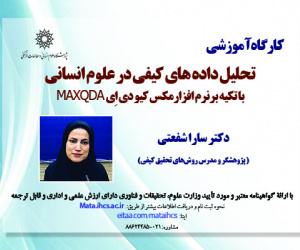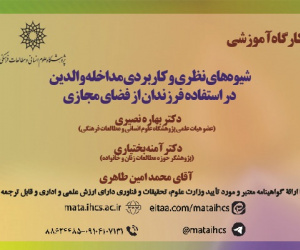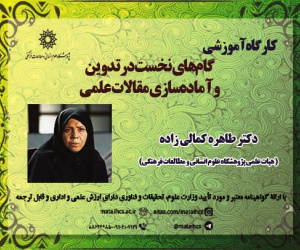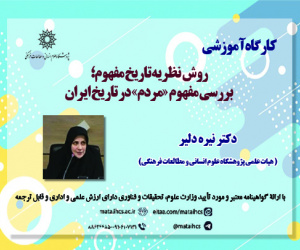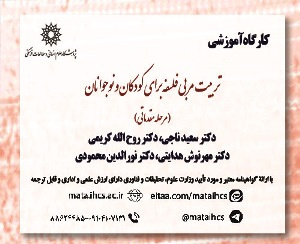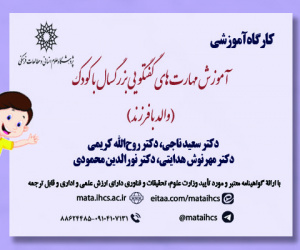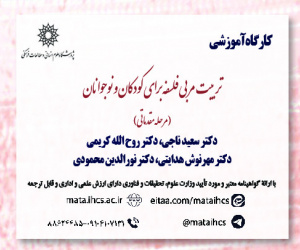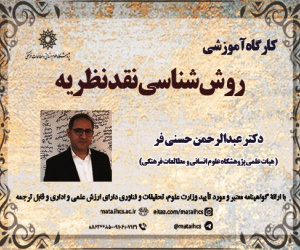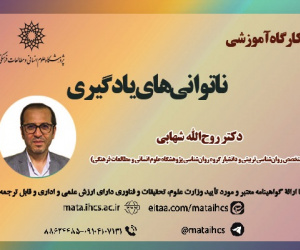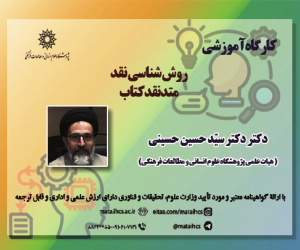تحلیل ابعاد زیبایی شناختی و معناشناختی نقش طاووس به مثابه مستوره (پالت) رنگی در قالی ترنج دار دوره صفوی (مقاله علمی وزارت علوم)
درجه علمی: نشریه علمی (وزارت علوم)
آرشیو
چکیده
طراحی قالی در عصر صفوی متناسب بازمان حکومت هر یک از پادشاهان و سرپرستان کارگاه های سلطنتی دچار تحول شد. قالی های عصر شاه تهماسب صفوی نیز شاخصه های منحصربه فردی داشته و تنوع عجایب نگاری ها، نقوش انسانی، جانوری، گیاهی، تجریدی و هندسی چشمگیر است. گوناگونی نقوش فرش در نیمه نخست سده دهم مربوط به حضور هنرمندان صاحب نام در عرصه طراحی بوده و نشانه های نبوغ ایشان در قالب های متنوعی جلوه گر شده؛ از آن میان جانمایی دوازده طاووس درزمینه قالی ترنج دار آنهالت است. به نظر می رسد طاووس های قالی آنهالت علاوه بر وجه تزیینی، بعد کارکردی و معنایی نیز داشته اند؛ به بیانی دیگر طاووس ها به مثابه مستوره (پالت رنگی) نقش دارند. اصول سازمان دهی هنری با تکیه بر دوازده طاووس موجود در متن قالی قابل درک است. علاوه بر آن نقش طاووس، بعد معنایی نیز دارد. هدف از انجام تحقیق، علاوه بر مطالعه دقیق یکی از بافته های اصیل عصر شاه تهماسب صفوی، کشف لایه کارکردی نقش طاووس، فراتر از وجه تزیینی پرنده است. چه عاملی هنرمند را ترغیب نموده تا تمامی رنگ های موجود در قالی را بر پروبال طاووس قرار دهد؟ به عبارتی دیگر علت تغییر جایگاه طاووس زیبا (بعد تزیینی نقش پرنده) به پرنده- مستوره (بعد کارکردی) چگونه قابل تبیین است؟ نقش طاووس در قالی ترنج دار آنهالت چگونه رونق تفکر و جریان شیعی را منتقل می کند؟ پژوهش حاضر از نوع کیفی بوده و در دسته تحقیقات بنیادی قرار دارد. مقاله رویکردی توصیفی تحلیلی داشته و در بستر تاریخ عصر شاه تهماسب یک نمونه قالی موزه ای را پژوهیده است. از ورای نقش طاووس، بعد کارکردی و معنایی پرنده را منظور نظر داشته و مفروض بر مستورگی طاووس فرضیه را بنانهاده است. اطلاعات قالی حاصل مطالعات کتابخانه ای و مشاهدات اثر از طریق تارنمای موزه متروپولیتن نیویورک است. درنهایت مطالعات، منجر به حصول اطمینان از کارکرد طاووس های دوازده گانه قالی آنهالت به مثابه مستوره (پالت) رنگی شد. از دیگر سو مطالعه بعد معنایی نقش طاووس از دو منظر تعداد دوازده نقش جانوری مرتبط بارونق شیعه اثنی عشری و تحلیل نقش یادشده، به رونق و اهمیت تفکر و جریان شیعی در عصر صفوی رهنمون ساخت.The Aesthetic and Semantic Aspects of the Peacock Images as Palettes in Safavid Carpets Medallion Patterns
Although the handwoven carpets from the Shah Abbas I and Shah Abbas II eras are well-known, investigating textiles during Shah Tahmasb's reign raises questions among researchers seeking answers to what and why. Some realistic and surrealistic patterns on the backgrounds of the carpets from the first half of the 10th century AH are true instances of wonder painting. Such patterns range from bodiless heads on the Vaq (talking tree) image to exotic animal motifs like Kailin and mythical figures of Simorgh and dragon. Some carpets, such as the one examined in this study, lack the wonder painting motifs. However, the harmonious and symmetrical arrangement of twelve peacock images on this Safavid carpet makes it the only animal motif from this era that stands out. What is noteworthy here is that the bodies of these peacocks are decorated using all of the hues applied in other parts of the carpet. During the Safavid era, carpet design underwent changes determined by the king's reign and the managers of royal carpet workshops. The carpets from Shah Tahmasb's era were remarkable for their varied wonder painting motifs, including human, animal, floral, and geometric patterns. The diversity of carpet designs in the first half of the tenth century AH relates to the efforts of renowned carpet designers, who revealed their creativity in different forms. An example of such carpets, is the Anhalt medallion (Toranj) carpet with twelve peacocks in the background. The peacock design on the carpet appears to have not only decorative but also practical and conceptual purposes. In other words, the peacock images serve as the carpet's palettes. Therefore, the twelve peacocks on the carpet background function as an outline for its artistic design. Moreover, the peacock images have a semantic substance. This study aims not only to examine an authentic carpet from the Safavid era but also to discover the functional aspects of peacock images beyond its decorative function. The research questions are: what inspired the Safavid artists to convey all carpet hues on the peacock feathers? In other terms, how did the decorative function of the peacock images change into a "bird/palette" with a practical function? How does the peacock image on the Anhalt medallion carpet represent the era's flourishing worldviews and the potency of Shia discourse? This study is qualitative, and regarding its purpose, it is basic research. It uses a descriptive-analytical method and examines a carpet from the Shah Tahmasb era preserved in the museum. The study focuses on the functional and semantic features of the peacock images, basing its hypothesis on the idea that they serve as palettes. The data were collected using desk research and observing the carpet’s photos on The Metropolitan Museum of Art’s website. These studies and observations finally confirmed that the images of the Anhalt carpet's twelve peacocks represent palettes. Furthermore, the semantic analysis of images, both in terms of discovering the correlation between twelve peacocks and twelve Shia Imams and in terms of image analysis, led the researchers to recognize the significance of Shia ideology throughout the Safavid era. The carpet has a medallion pattern and no other visual features except the Arabesque swirls and minuscule floral design. It indicates that, in comparison to other carpets of the period, the Anhalt carpet lacks a diversity of patterns. As a result, in order to accentuate the twelve peacocks in accordance with the gestalt norms of image-background connections, the artist has combined the background and the Khatai floral motifs, paving the way for harmonization between the background and the peacocks. So, the twelve peacocks serve as palettes, allowing them to stand out more readily. The semantic examination of peacock motifs in the Safavid medallion carpet showed that it served as a sign of Shia traits, a legitimizing tool for the kingdom due to its relationship to the twelve Imams, and a symbol for the flourishing Shia theology and discourse. Regarding the symbolism of the twelve peacocks on the Anhalt carpet, it refers to Shia ideas during the Safavid era. Such patterns demonstrate an ambition to define monarchs like Shah Ismail I and Shah Tahmasb as Imam Mahdi's representatives (may God hasten his reappearance).
In the rivalry between the Safavid Shia and the Ottoman Sunni discourses, each attempted to legitimize its ideas and authority foundations, and both saw artworks and cultural goods as a useful tool with long-term efficiency. Regarding this, the Safavid monarchy was trying to convey its idea of legitimacy through artistic products such as carpets. As a result, throughout the Safavid era, the peacock image served as a symbol of uplifting Shia theology and discourse, as well as a tool for Safavid rulers to demonstrate the legitimacy of the ruling system. Needless to say, peacocks were symbols of monarchy in various cultures. As a result, the image of a peacock symbolizes both Shia religion and the features of Safavid kingdoms.

